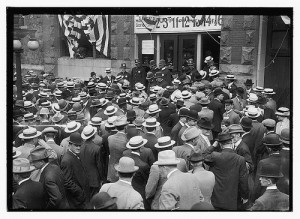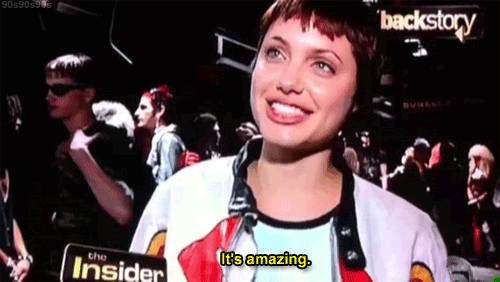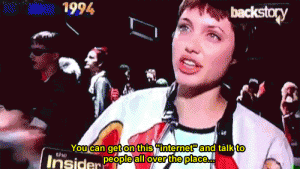Category: Communication
Keyword Round-up: May on Academia.edu

Back again with the May keyword round-up from Academia.edu, this time with an emphasis on “Heroes & Zeroes” and celebrity athletes and narratives.
A reminder: Academia.edu offers scholars analytics data, as well as the opportunity to understand the ways in which their research is being discovered. Using this data, scholars may be able to better frame their research to interested parties. I’d certainly say there are interested parties in retiring athletes, transitions, and harnessing celebrity of sports figures.
Following a lonely period, my article “Arguably the Greatest: Sports fans and communities at work on Wikipedia” (2009) was given a page-dwelling compadre. I expanded my identity as an academic who explores the conflict-to-consensus process at play on Wikipedia to one who also explores athlete narratives as they intertwine with celebrity – all achieved by posting another article.
This article “HEROES AND ZEROES: Extending Celebrity Athlete Narratives Beyond Retirement” was developed in 2007 and published in the now-defunct journal Football Studies in 2008. This was a part of my early work in exploring the strands of media(ted) storylines and bundles of cultural values – through which athlete public identities are developed by interconnected sets of meaning . You will notice my early thinking on narrative and the importance of unpacking the ways we tell stories – what and how we say what we mean in media discourse.
In the article, I also proposed a fifth type of professional athlete identity based on contemporary cultural contexts. Here an athlete moves from what Critcher (1979) (1) frames as “traditional/located to transitional/mobile to incorporated/embourgeoised, then to superstars/dislocated.” I argue that the emergence of celebrity grounds the athlete once more in a new realm. I explain: “Though displaced from their former social statuses and lives, this re-rooting in an imagined popular space of celebrity makes these formerly remote stars accessible once more following the cementing of their narrative. Thus the individual is subsumed by a new concept of the brand or celebrity entity – rather than a person, the celebrity is notable for his or her cultural pattern of values.” It was a fascinating exploration and essentially informed what was the first dissertation I wrote prior to embarking on the final version of my doctoral research. If you’re interested, you can read more at my Academia.edu page.
Back to the keywords! My analytics report shows that ten searches were performed through Google and brought visitors to my Academia.edu page. One of these searches was performed on Bing, with the bulk through Google. Visitors searched from the US, UK, Australia, Germany, and Indonesia. The search terms were as follows:
- athlete as cultural hero (No ranking provided)
- how sporting celebrities cope with retirement (Google search rank: 1)
- retired celebrity women (Google search rank: 1)
- culture value of pro athlete endorsement (Google search rank: 3)
- narrative about mia hamm (Google search rank: 1)
- the rise of the celebrity athlete in the 1980s – (Google search rank: 5)
- One David Beckham? Celebrity, Masculinity, and the Soccerati /Cashmore, Ellis; Parker, Andrew (2003) In: in: Sociology of sport journal (No ranking provided)
Searches of note: Four searches concerned celebrity and athletes – this is interesting as the notion of celebrity athletes seems to have become both less popular but also redundant. In other words, there is nearly an expectation of celebrity for emerging (let alone retiring) athletes. Retirement transitions were in the crosshairs of 2 searches. Several searches also related to the narrative (also “narrative” sic) and cultural messages conveyed by the athlete. Finally, visitors were seeking information on women athletes.
This month, no searches were directly seeking my scholarship. The addition of this slightly older article demonstrated an intriguing change in the incoming traffic for my page; I only had eight unique visitors to my profile and documents—and 7 document views—in May. Let’s see if June brings in more summer searching.
(1) Critcher, C. (1979). Football Since The War. In J. Clarke, C. Critcher, & R. Johnson (Eds.).
Working-class Culture: Studies in history and theory (pp. 161-184).London: Hutchinson of London.
Where it’s @
From FastCompany, a look at the character world’s maven of reinvention – the @ character symbol
With whimsical beginnings as a rose in bookkeeping then moving to the “navel of the digital body we now call the internet,” John Brownlee’s article unravels the @ symbol. Brownlee chats with Keith Houston, author of Shady Characters: The Secret Life of Punctuation, Symbols, and other Typographical Marks. The two authors discuss whether @ is where it’ll stay – as THE character representation of people inhabiting digital realms.
It’s a fascinating look at the capability of characters to transcend language barriers. It also speaks to the use of communication strategies through particular character or representational choices. Finally, the appropriate use of the @ symbol is an excellent example of the ways in which one can demonstrate “insider” status or savvy. This knowledge demonstrated by using the symbol appropriately–whether directing comments toward another digital comrade or sending comments through an electronic system–and even sparingly in contemporary digital spaces (see Brownlee’s comments on CyberC@fes). Click through the link to read more.
AAA 2013: DANG, that’s necessary conflict
Conflict is uncomfortable… yet necessary, at least in the case of my research and submission to the Digital Anthropology group, DANG, panel for the American Anthropological Association (AAA) 2013 meeting. In Chicago this year, I’m hoping to share my findings about the ways in which a fandom encounters and uses conflict between members to refine the values they espouse.
“It boils down to respect”:
Defining the values of a fandom through conflict online
Increasingly, social media allows users to connect their online behaviors to physical practices in pursuit of collective goals. In these digital public spaces, communities of practice are able to bypass geographic and temporal boundaries. For U.S. Women National soccer team (USWNT) fans, Tumblr offers a digital realm in which multimodal communication unfolds – and quite often, conflict arises. Through online ethnography and discourse analysis, this study examines conflict as essential to refining USWNT fandom values; however, conflict also jeopardizes the participatory practices that define the fandom.
This community of practice can be explored as a collaborative project that incorporates wider discourses of gender, sport, and nation. USWNT fans share media from first-hand experiences, as well as produce user-generated content. Fan-users also broadcast requests to the fandom, display insider knowledge, and articulate meaning in belonging to the fandom. Subjects spurring USWNT fandom conflict include source attribution and rules for appropriately tagging content. Frustrations about these points of conflict threaten archiving and sharing habits, which in turn threaten to dry one data stream through which “fandom” knowledge is quenched.
Considering the future of open access and linked communities, the current justifications fan-users apply toward the perceptions of ethical responsibilities in the fandom may be instructive. This paper also considers methodological and ethical challenges in researching asynchronous communication in a dynamic digital space. The ways in which the USWNT fandom “does” conflict may offer insight into the ways digitally mediated behaviors could inform practices and discursive spaces of future engagements and conflict resolution.
Summary: 3 Features in Successful Cultural Heritage Outreach Events

The following reflections summarize features of cultural heritage outreach and engagement events I have attended during my recent fieldwork at the Smithsonian Institution. I have selected three overlapping features that appear to have contributed to the success of these cultural heritage events; in an upcoming post, I will also offer several tips for improving upon these outreach strategies.
Crowdsourcing
[Gathering or requestion information and action from the crowd, audience, or user]These engagement events have been predominately in line with a citizen-scientist model or crowdsourcing model. In other words, they have gathered participation on an avocational and/or volunteer basis. They have also operated in systematic ways to collect, refine, populate, and assign values – “doing things” with materials. The events have not necessarily been science-focused, though some have been. Most have required participants to BYOD and register for participation. Several of the events have also gathered experiential information and viewpoints from participants at the close of the event.
Participatory
[Audiences or individuals “opting in” toward a goal, either personal or collective]These outreach events have been based around the idea of a shared experience of working toward a project goal – calling upon a sense of participatory culture or being creator-consumers. That means that participants have been taking actions (“doing”) toward both individual projects and shared roles or group work toward parts of a goal, whilethe event has taken participants toward achieving a collective goal in the end.
Free but exclusive
[No charge but cost of time and some bounding on event]Each of these events were held by cultural heritage institutions and were free to attend; yet, the events were also managed in a way that was bounded in number, space, or access. Clarifying my use of “exclusive” to mean selective in this context, the events have typically accepted the first candidates for participation and allowed those individuals to feel as though they are gaining unique access in some way.
The three features discussed above appear to have subtly informed approaches and agenda; and resulted in events that appeared to be reasonably successful.* Enthusiastic and engaged participants were found at all events and activities taken toward each event’s stated goals.
Despite the appearances of success for these events, each event offered several points at which engagement or efficiency could be improved. Watch this space for an upcoming post that speaks to four ways best practice at cultural heritage outreach events can be built.
*This assumption made without knowledge of each event’s stated metrics for success.
**Image of crowds outside the entrance of the 1912 Republican National Convention held at the Chicago Coliseum, Chicago, Illinois, June 18-22, 1912 – shared from George Grantham Bain Collection (Library of Congress) – via Flickr Commons




